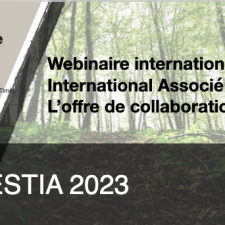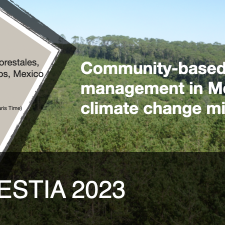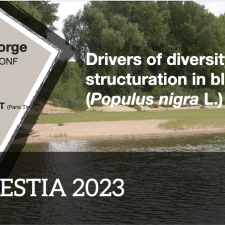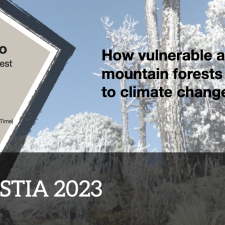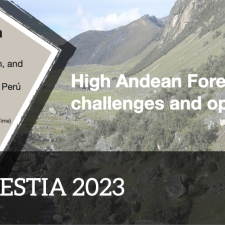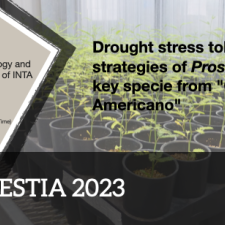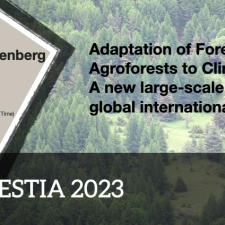Notice
#7 Remote sensing applied to forest mortality assessment : the case study of an unprecedented mortality event in mature Pine plantations in Argentina
- document 1 document 2 document 3
- niveau 1 niveau 2 niveau 3
Descriptif
Abstract
The applications of remote sensing techniques are under continuous development. In the present seminar we present their possibilities in relation to studies of forest mortality, in particular to commercial plantations. In contrast to studies focused on natural forests, little evidence exists on the impact of “hotter-drought” events on commercial forestry species planted outside their native range. With the aid of remote sensing, complemented with field surveys, we explored an unexpected and regionally-distributed tree mortality event that occurred recently in commercial pine species across the Mesopotamian region of Argentina, South America. The event was associated with a hotter-drought period during the 2021-2022 warm season preceded by three years of drought and was spatially heterogeneous at regional and local scales. We used Sentinel 2 and Landsat 8 multispectral images and Random Forests algorithms to map canopy mortality timing, rate, and magnitude in Pinus taeda and their association with environmental and stand characteristics at the local scale to determine which conditions make these productive systems more vulnerable to extreme climatic events. We found that landscape characteristics and previous conditions are important drivers of the occurrence and mortality rate in the forest stands studied. The methodology could be applied in other systems serving as a useful tool to define the areas more suitable for climate-smart forest management as well as to build mortality-risk maps in productive landscapes.
Presenter
Gabriel Gatica is a researcher from CIGEOBIO (Universidad Nacional de San Juan - CONICET) and Forest Ecology Group (Tandil, IPADS Balcarce INTA CONICET) of Argentina. His research focuses on applying earth observation systems (remote sensing and GIS) and statistical modelling to evaluate the status and changes in the structure and functioning of cultivated and native forest systems. Particularly, he is interested in the study of management factors and landscape characteristics that shape the responses (productivity, wood quality, mortality) of forests to natural (droughts and heat waves) and anthropogenic (deforestation and logging) disturbances.
Thème
Dans la même collection
-
Webinaire international – Laboratoire International Associé FORESTIA
RozenbergPhilippePortéAnnabelJesúsVargas-HernándezGuillerminaDalla-SaldaFernandezMaria-ElenaMarcucci PoltriSusana NoemiDuplex France-Argentine à l’occasion du 5ème anniversaire du Laboratoire international associé FORESTIA
-
#6 Community-based forest management in Mexico and climate change mitigation
Angeles-PérezGregorioSEMINAR # 6 : "Community-based forest management in Mexico and climate change mitigation " Gregorio Ángeles-Pérez (Colegio de Postgraduados, Mexico)
-
#5 Drivers of diversity structuration in black poplar (Populus nigra L.)
JorgeVéroniqueSEMINAR #5 "Drivers of diversity structuration in black poplar (Populus nigra L.)" Dr Véronique Jorge, UMR BIOFORA, INRAE/ONF, Orléans September 8th, 3pm CET (Paris Time)
-
#4 How vulnerable are the high mountain forests of Mexico to climate change ?
Gómez GuerreroArmandoSEMINAR # 4 "How vulnerable are the high mountain forests of Mexico to climate change ?" Dr Armando Gómez Guerrero Graduate program in Forest Science, Colegio de Postgraduados, Mexico
-
#3 High Andean Forests: challenges and opportunities
Boza EspinozaTatianaSEMINAR # 3 « High Andean Forests: challenges and opportunities » Tatiana Boza Espinoza Institute for Nature, Earth, and Energy (INTE), Pontificia Universidad Católica del Perú May 19th,
-
#2 Drought stress tolerance strategies of Prosopis alba, a key specie from "Gran Chaco Americano"
DiegoLopez LauensteinSEMINAR # 2 : Drought stress tolerance strategies of Prosopis alba, a key specie from "Gran Chaco Americano", Diego López Lauenstein, Institute of Plant Physiology and Plant Genetic Resources of INTA
-
#1 Adaptation of Forests and Agroforests to Climate Change: A new large-scale, long-term, global in…
RozenbergPhilippeSEMINAR # 1 : "Adaptation of Forests and Agroforests to Climate Change: A new large-scale, long-term, global international initiative" Philippe Rozenberg (INRAE Val de Loire, Orléans, France)


